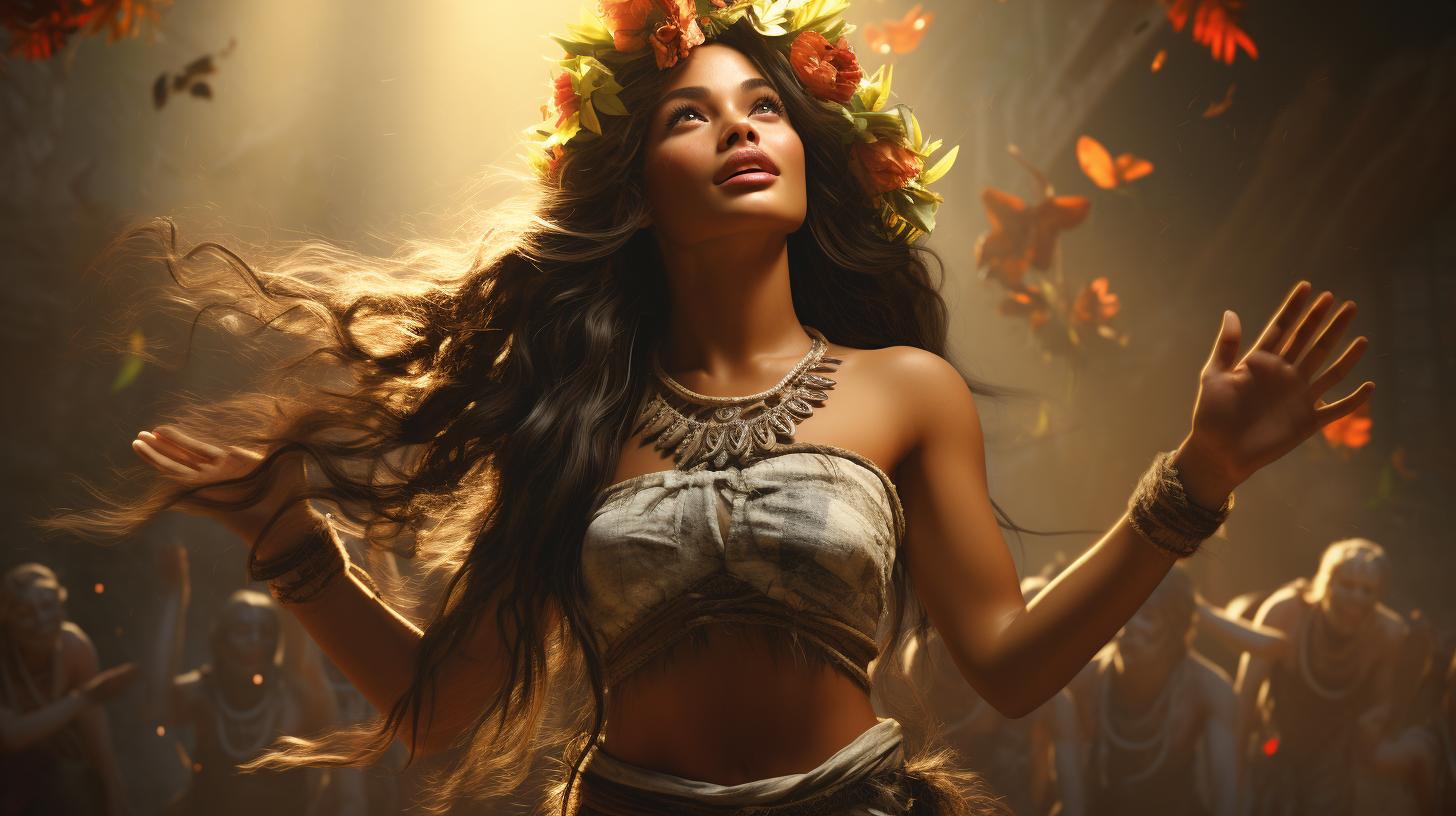Laka Hawaiian Goddess: Exploring the Ancient Hula Traditions

Laka Hawaiian goddess holds significant importance in Hawaiian culture, particularly in the realm of hula. This article explores the origins and legends surrounding Laka, as well as her role as a goddess of healing and nature.
It delves into the historical evolution of the hula dance and Laka’s influence on this revered tradition. The article also examines the distinct styles of hula, such as the traditional Hula Kahiko and the contemporary Hula ‘Auana, and the significance of chants and mele in hula performances.
Additionally, it highlights the cultural significance of Laka and the hula in modern Hawaiian society.
The Goddess Laka
The Goddess Laka holds a significant place in Hawaiian mythology, particularly in relation to the revered art of hula. This section delves into the origins and legends surrounding Laka, shedding light on the cultural and spiritual context that shaped her identity.
Origins and Legends Surrounding Laka
Laka’s origins trace back to ancient Hawaiian folklore, where she is believed to be the daughter of Kapo, another important goddess associated with hula. According to legends, Laka was born on the island of Kauai and possessed extraordinary talents in dance and song.
One popular legend recounts the story of Laka’s encounter with the demigod Kamapuaʻa. This encounter resulted in a memorable performance by Laka, captivating Kamapuaʻa with her grace and beauty. This legend solidifies Laka’s association with hula and her ability to mesmerize audiences with her rhythmic movements.
Attributes and Symbolism of Laka
Laka is widely revered as a goddess of beauty, fertility, and the arts. She represents the embodiment of grace, harmony, and the natural world. Laka’s connection to hula and her association with fertile lands symbolize her role in spiritual growth, creativity, and sustenance.
- The Goddess of Beauty: Laka’s enchanting presence embodies beauty, both in physical form and in the movements of the hula dance.
- The Goddess of Fertility: Laka’s association with fertility extends beyond the physical realm to encompass the nurturing and abundant qualities of nature.
- The Goddess of the Arts: Laka is considered the patroness of hula and all forms of artistic expression, inspiring creativity and preserving cultural traditions.
Devotion to Laka is prevalent among hula practitioners, who seek her blessings and guidance in their journey to mastering this revered dance form.
Her symbolism permeates the hula tradition, infusing it with spiritual significance and reverence for the natural world.
Laka as the Hawaiian Goddess of Healing and Nature
Laka, the Hawaiian goddess, embodies the essence of healing and nature in Hawaiian mythology and culture. She is revered for her role in promoting physical and spiritual well-being, as well as her connection to the natural world.
Laka’s Role in Healing Practices
Within Hawaiian traditions, Laka holds significant importance as a goddess associated with healing practices. She is believed to possess the power to restore harmony and balance to both individuals and the community as a whole.
Laka’s influence extends to various forms of healing, including spiritual healing, herbal medicine, and ritualistic ceremonies.
As a sacred figure associated with healing, Laka is often called upon through prayer and offerings in rituals dedicated to physical and emotional well-being.
The rituals and practices performed in honor of Laka aim to bring forth her healing energies and invoke her blessings for those in need.
Laka’s Connection to Nature and the Environment
Nature plays a central role in Hawaiian culture, with Laka acting as a bridge between humans and the natural world.
She is regarded as the guardian of forests, plants, and all living things. Laka’s connection to nature encompasses the spiritual and physical realms, highlighting the interdependence between humans and the environment.
Through Laka’s connection to nature, the Hawaiians acknowledge the importance of respecting and preserving the natural environment. She inspires a deep appreciation for the inherent wisdom and healing properties found in plants, trees, and the earth itself.
